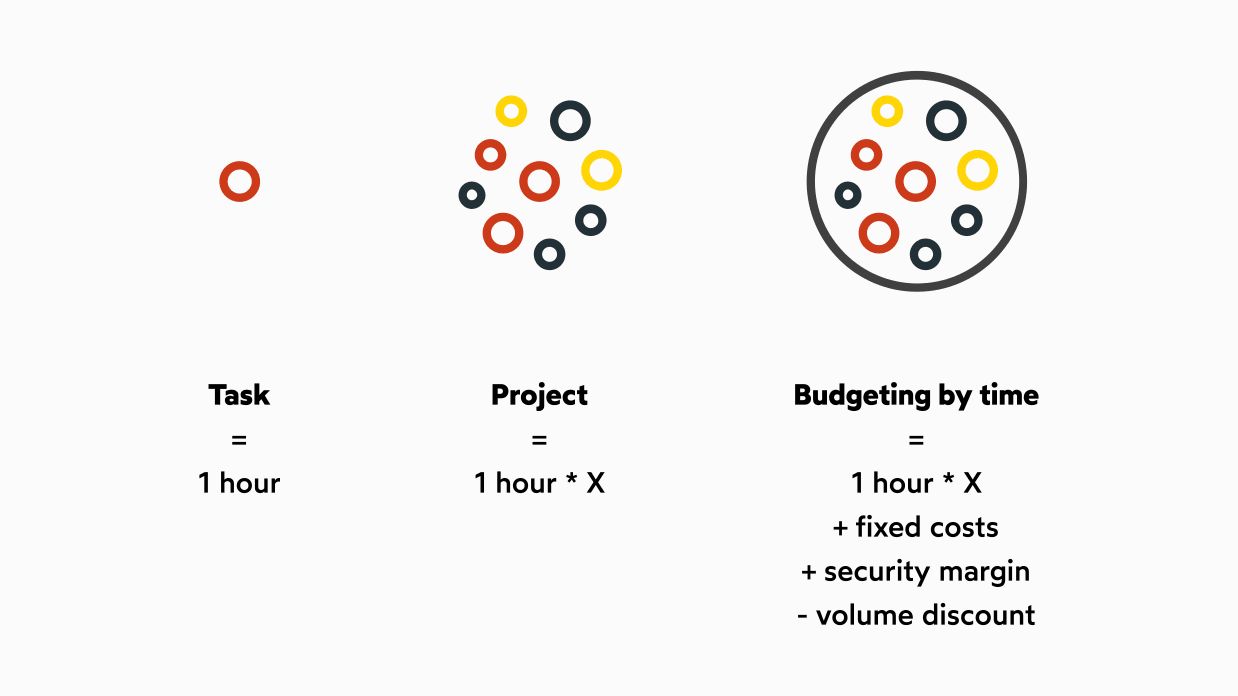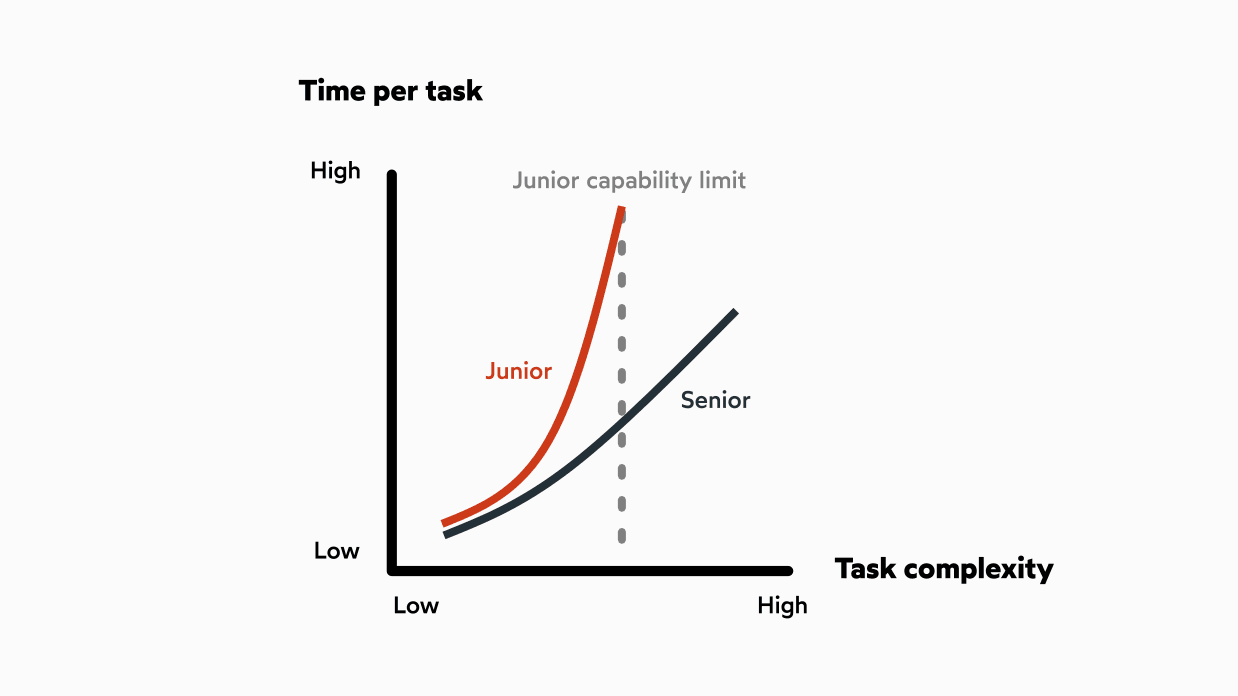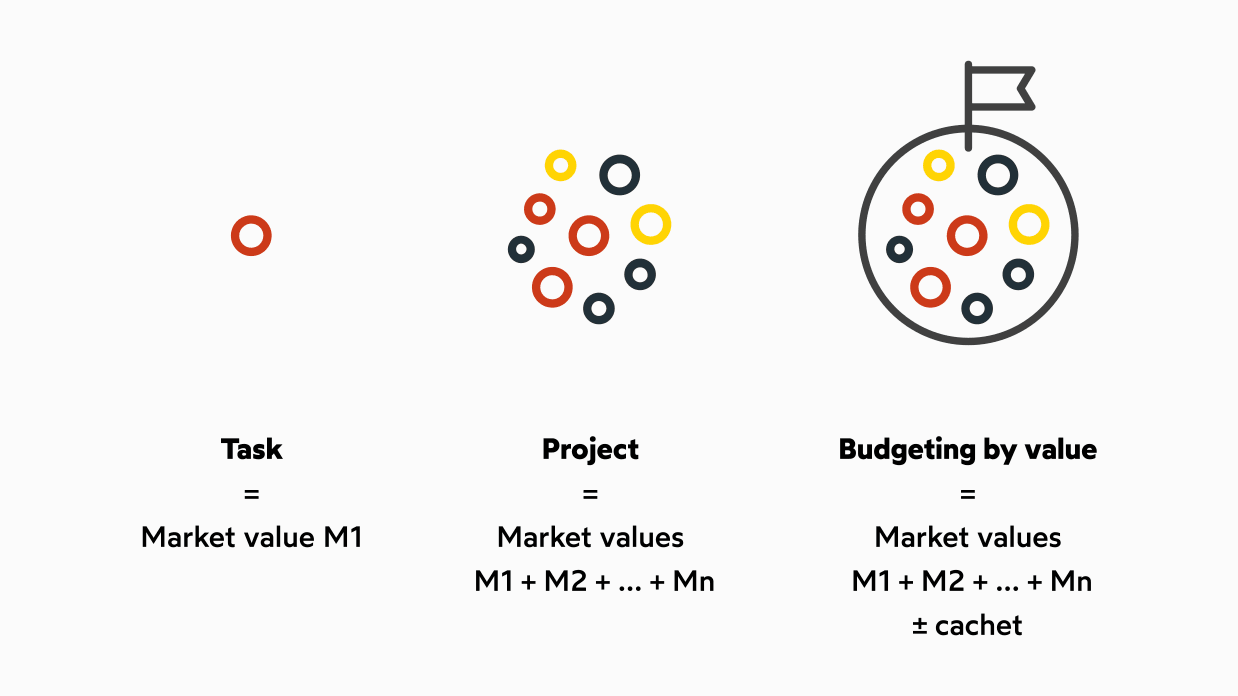What’s an hour?
Freelancers and web agencies need to work within the bounds of an understandable measure unit.
Time is a scarce resource and, as such, is often regarded as the most valuable asset a professional individual or team has.
Whether it’s an internal calculation or it’s directly translated on the budget sent to the client, one hour might be regarded as the atom equivalent of professional work.
Selling one’s time at a fixed hour rate is a common practice. When a complex project knocks on the door, a usual budgeting approach is to estimate the hours it’ll take to completion, multiply them by the working rate, add any associated fixed costs it has, set a security margin and, maybe, apply a volume discount.

While this approach is valid for many cases, it can also be a painful way to lose projects and money.
Are all hours equal?
As years pass by, workers gain experience. They can perform the same taks faster and more accurate. They acquire knowledge and store assets, both ready to be reused. There is an increased chance that they have faced an issue before, so they’ll know what to do straight away. Their sense of intuition is developed to avoid situations that may end becoming a waste of time. And, finally, they have the ability to solve any task, in spite of its complexity, contrary to more inexperienced colleagues.
How valuable is that?
It’s really hard to translate some of these intangibles into an hourly rate system:
- When talent within your company is not enough to tackle complex projects with confidence, the hourly rate of your team tends to zero.
- When talent within your company -which comes at a cost- is well above average, dealing with simpler tasks makes you less attractive compared to your competition.

When I was starting my career, I spent 10 hours of my time on a single task I can do now in about 20 minutes. But there are also tasks in which I barely have any advantage over the junior version of myself.
Seniority varies from task to task and from person to person, and a fixed hour rate will under or overestimate all these nuances.
Time vs Value
Grasping how difficult is to get budgeting right with an hourly rate system, some companies prefer to work with a value based approach:
- A corporate presentation video costs X.
- A landing page costs Y.
- Text creation per page costs Z.
Each price is calculated with the market value in mind, adjusted by the reputation of the company.

It makes sense once one realises that the time spent on a task doesn’t always relate to how value is perceived.
What’s more likely to make your client happier: spending a whole morning performing a CRM data cleansing or solving a hacking on his website within half an hour? He’ll be probably willing to pay twice as much for the second task even if it took your team an eight part of the time.
The concept of perceived value can help you or your agency to have greater benefit margins while keeping the prices fitted within the market range.
A good indication of how well-adjusted your fares are is the percentage of accepted budgets compared to the total of budgets sent for each of the different tasks you or your company do. If budgets for a task get accepted 85% percent of the time, you might be charging too low and should adjust accordingly.
This approach is also worker-agnostic and can lead to a better team resource management. The need of experience needed for certain tasks can be better modulated and employees can be evaluated by how decisive they are when performing similar tasks.
Should you adopt a value based approach?
The truth is value-based systems work better for stardarised tasks, but no one can expect it to be implemented for every requirement a client might have.
Documenting pricing for all possible tasks is nearly impossible, and aggregating single tasks tend to results in really high budgets that scare clients away.
There is no perfect, all-in-one solution to overcome the harshness of project work.
If you work for market leading clients, a high enough hourly rate is a clear and profitable way to run your business. If you can ticket your hours at 150 €, nuances become side-line anecdotes.
But that’s not the case for 95% of us.
A hybrid model might be a good compromise for a mature team or an experienced freelancer.
I suggest you to implement a list of minimal acceptable prices for the most usual projects you may face. It certainly won’t fit all the possible requirements clients might have, but it’s a very helpful tool to get a good foundation to start from.
This minimum price tag eliminates the risk of faring too low or the temptation to adapt your prices to what your human capital is able to produce within a fixed amount of time, which is a recipe for disaster.
This can coexist with an hourly-based approach for additional client requests that extend over your minimal project scoping.
Sustained excellence will increase your prestige, which opens up the possibility of having greater margins and makes budgeting easier. We’re all fighting for it.
 Luis Sanz Rodríguez
Luis Sanz Rodríguez